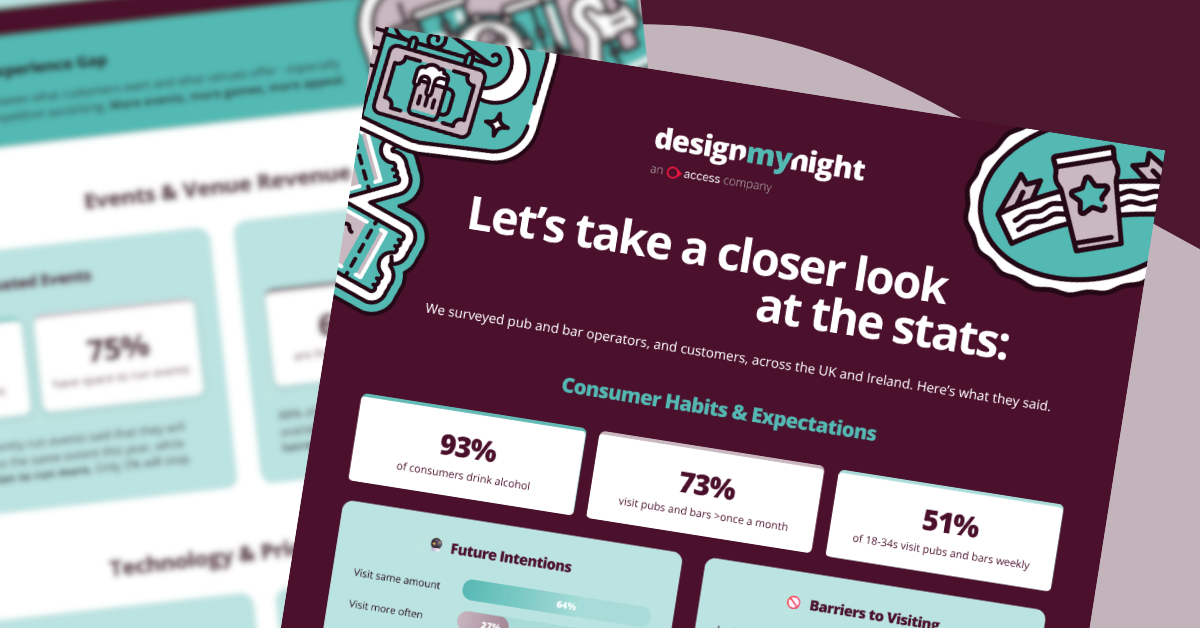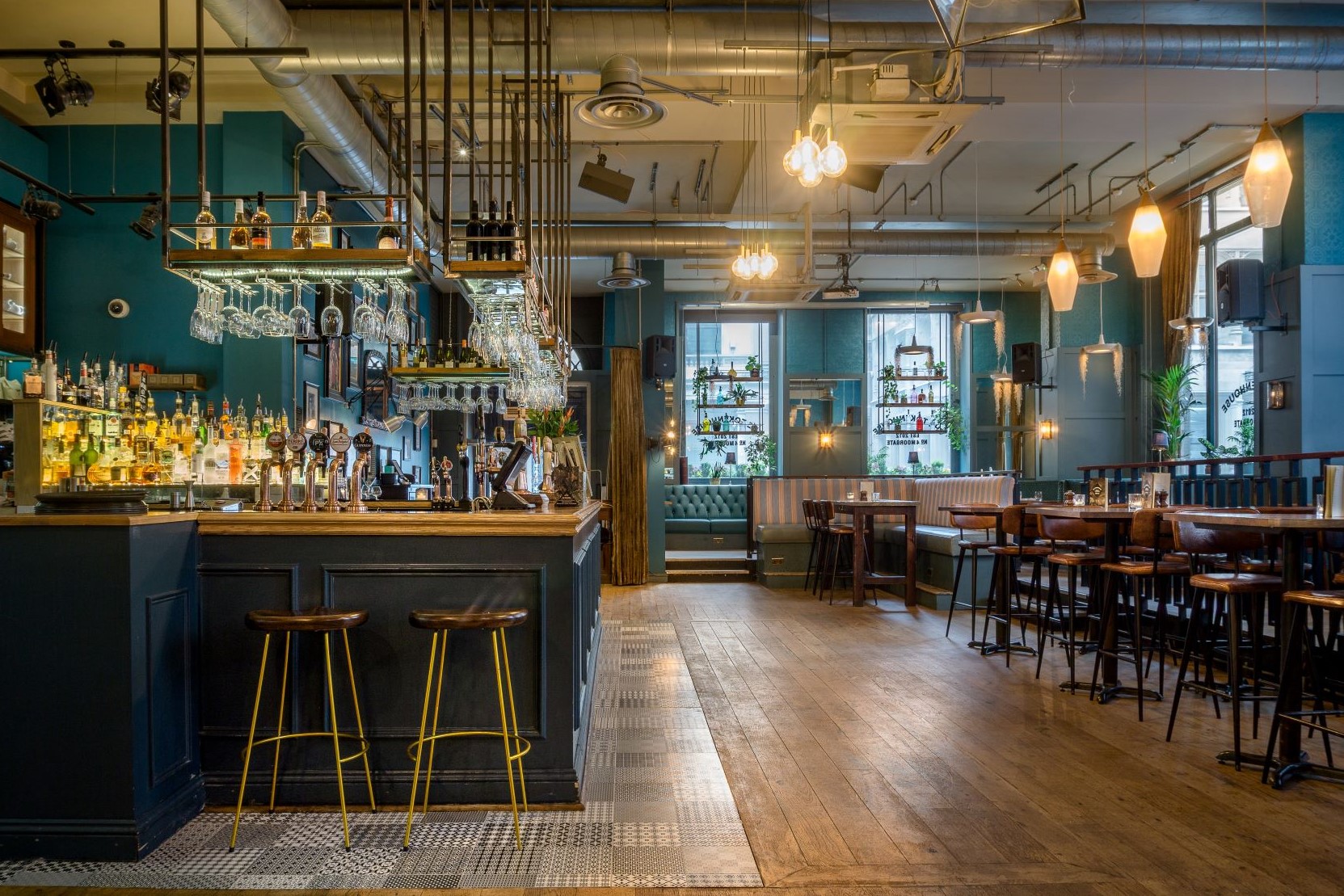As of early 2025, there are 46,000 pubs currently trading across the UK – from traditional pubs, to gastropubs, to specialist microbreweries.
And this year may prove to be the most promising yet for pubs, as we see the pub closure rate drastically decreasing and 74% of venues feeling positive about the future of their business. (View the stats here! 👀)
It might be a good time, then, to make your start in the industry.
Many choose to get involved in the pub industry thanks to the love of their community, their interest in food and drink, and their desire to provide customers with a positive experience. But there are plenty of other benefits, such as:
- To be your own boss – setting your own goals and boundaries and keeping true to what you want to achieve.
- To experiment with venue design and menu selection, showcasing your personality in your brand.
- To provide your community with a space to gather and enjoy together and draw in regular customers that support your endeavours.
- For personal growth – to expand your management and planning skills.
- To invest in a productive and successful venture that has financial benefits.
If you’re reading along thinking ‘Yes, I want that!’, then it could be the right path for you.
A hospitality business takes a lot of work to open and manage though, and you need to prepare yourself for the workload that comes with it.
ResDiary has been proudly supporting pubs and bars for years. Whether you’re thinking about opening your very first pub, or you’re already an operator looking to expand your business, we’ve combined our expertise and customer insights and put together the perfect tool for you:
Your pub opening checklist
This checklist is a must for new operators opening their first pubs, but it's also a great touchpoint for existing pub operators looking to reassess their operations or expand their business into new venues:
- Establish a business plan
- Calculate the costs
- Set up your business and get your permits
- Build out your team and your vision
- Implement the right tools for operational success
- Attracting diners to your pub
- Look to the future
We explore all of these sections in more depth below, but if you just want a checklist to follow, then why not download our pub opening checklist here and tick your way through all the essential tasks?
Understanding the current landscape of UK pubs
Before you explore how to open a pub, you need to understand the current state of the pub industry and consider whether a new venture is likely to succeed in current circumstances. Fortunately, it seems that the pub and bar industry in the UK is experiencing a cautiously optimistic rebound.
Operator outlook
Perhaps the most encouraging insight about the current landscape of UK pubs, is data from Ask the Landlord (Sourced from the British Beer and Pub Association (BBPA), Office for National Statistics (ONS), and CGA Strategy market research), which shows that despite some venues still closing their doors, we look to be entering a more stable period for the pub industry.
This is because despite persistent economic pressures - particularly around operational costs, consumer affordability, and reduced disposable income - footfall remains relatively strong.
DesignMyNight’s report Pubs and Bars in the UK and Ireland: A Look at What's Happening in 2025 highlights this, with 38% of venue operators reporting increased footfall over the past 12 months, and 47% anticipating an increase over the next year, too. Indicating further optimism, 74% of pubs and bars say they are positive about the future of their business. 36% even say that business is thriving!
Customer outlook
According to DesignMyNight’s report Pubs and Bars in the UK and Ireland: A Look at What's Happening in 2025, most UK consumers visit pubs and bars regularly, with 42% visiting at least once a week across the past 12 months.
Over a quarter (27%) also expect to visit more often across the next year, too.
But why do customers actually visit pubs and bars?
- To socialise with friends or family (86%)
- To go for a meal (73%)
- To celebrate an occasion (birthdays, hen/stag parties, etc.) (64%)
- To celebrate seasonal events (Christmas, Bank Holidays, etc.) (48%)
- To accompany other activities (going to the theatre, attending a sporting event, etc.) (43%)
For those aged 18-34, ‘To relax with colleagues after work’ was also a popular reason for visiting.
And what do customers find appealing at pubs and bars?
- Outside space or seating
- The option to order food
- Live performances
- Drinks promotions
- The option to play games
- Quiz nights
- Events or classes
- The option to participate in competitive socialising
- Televised sports
Knowing what customers want can help you better understand how to pitch to your audience, what to do, and when. For example, 96% of customers surveyed found the option to order food appealing, and 97% of operators surveyed said that they currently serve food - effectively addressing consumer demand. So, if you’re figuring out how to open a pub, consider including food and other appealing factors in your business plan.
Right, let's get down to the important stuff.
Your research suggests that the landscape looks positive, so how do you actually set about opening your pub?
How to open a pub: Your 7-step guide
Right, how to open a pub. Let’s get started:
1. Dream it, plan it, pub it
Before you start pulling pints, it’s time to figure out the bones of your business.
Ask yourself: What kind of pub do you want to run? A family-friendly local? A trendy craft beer pub for students? Whatever your vision, you need to start with a solid business plan.
That means diving into:
- Your brand identity and mission statement (yep, it’s worth thinking this through now!)
- Who your ideal customers are
- Where you’ll set up shop (location, location, location!)
- Market research and SWOT analysis
Check out this business plan template for some great advice on establishing a concept and strategy for your venue.
Also important: choosing the right business structure. There are plenty of structures available in the hospitality industry, with some of the most common options being owner-operated, a partnership, or a franchise.
Each option has different rules around tax and profits, so you should weigh up which is best for you. Chatting to an expert advisor is a smart move to help with this.
2. Count the costs
How much does it cost to open a pub? Time to talk money. Opening a pub isn’t cheap, but it is manageable with the right funding plan.
Here’s where your money’s likely to go:
- Securing a venue
- Renovations and decor
- Equipment and kitchen kit
- Licensing, staff, and marketing
Most businesses require an initial investment to fund these costs. Funding can come from a source of your choice, with personal savings, investors, and loans being the most common. You’ll need to create a detailed budget and track costs against your funding sources. If you have a third-party investor, make sure it’s appropriately outlined in writing, so there are no chances of future disputes.
ResDiary tip: always overestimate a bit. It’s better to have some wiggle room than run dry right before your big launch!
3. Lock in your licenses and legal bits
Found the perfect pub spot? Time to make it official and negotiate your lease.
Your lease should be solid (and fair). Check:
- If it suits your venue design or is open to remodelling
- If the lease is conditional on getting a liquor licence or planning permissions from the local council
- How long the lease is and if you need additional options
- If the landlord is the owner of the building and can grant you the lease
- Whether or not renovations are possible
- Whether the area has reasonable commercial rent increases
- If there is line-of-sight from the street and suitable space to promote
After that, you'll need to apply for all the right permits and licenses. Under the Licensing Act 2003, you’ll need a Premises License to legally sell alcohol, provide entertainment, and serve late-night refreshments at your pub. You’ll also need to appoint a Designated Premises Supervisor (DPS) who needs to hold a Personal License and will be legally responsible for authorising alcohol sales at your pub. You might also need licenses for playing music, and outdoor dining, depending on what you want your pub to offer. Some permits may take some time to get the green light, and your business should not open without the appropriate licenses.
One of the most enjoyable parts of opening your own hospitality business is choosing its name and brand. All businesses, regardless of industry, are required to have a name, but they cannot infringe on another trademark. To protect your brand, check your pub name with the UK Intellectual Property Office (UK IPO) and register your trademark if necessary.
4. Bring your pub to life
Now comes the fun part: building your team, space, and offerings.
- Design and build-out: Whether you’re going for rustic charm or sleek and modern, your space should match your brand and wow your guests. This is the stage to renovate, furnish your venue, and add all the personal touches that represent your vision.
- Staff: Hiring great people is key. Think bartenders with charm, chefs who know their stuff, and a front-of-house team that makes everyone feel welcome. You will also need to create employment contracts and onboard staff with training.
- Menu: Balance quality and cost. Pub-goers love classic comfort food with a twist, but they also love a good deal. Get your pricing right to bring in the crowds without hurting your margins. Check out our blog on profitable pricing strategies to apply these to your pub!
- Suppliers: From food, to booze, to napkins, it’s essential to choose reliable suppliers that you can build solid relationships with. These suppliers will be some of your main partners in your business venture, and all of them will require their own negotiations and payment plans. So, don’t just seek out contracts that will save you time and money, prioritise those that have a history of success and trustworthiness. Good contracts make great partners.
5. Power your pub with the tools for operational success
Want your pub to run smoothly from day one? Tech is your best friend.
Here’s what to think about to optimise your operations:
- EPOS systems and inventory management tools, to take payments simply and keep those taps flowing and kitchen stocked.
- Online booking tools so guests can reserve a table easily.
- Staff training platforms to keep your team on top of their game.
- Rota management tools to make organising shifts and schedules stress-free.
- Compliance checklist software to ensure maintain your due diligence and safety standards.
And don’t forget your online presence! Set up a pub website and active social media accounts, where you can tease your opening, share behind-the-scenes content, take bookings, and interact with customers.
Which leads us on to...
6. Attracting customers to your pub
Whether you're opening your first pub or engaging a new community by opening a second venue, this step is key to getting the word out and filling your pub with happy punters. Marketing and promotions are just as crucial for long-standing pubs as they are for brand-new venues, and tech is an important tool to do this, too.
Besides your website, some tech must-haves include:
- Social media pages
- Booking systems (93% of venues currently take reservations at their pub or bar with a digital booking system, compared to only 4% who use pen and paper)
- Review site listings
- Email marketing tools
- Cybersecurity tools (because protecting customer data is a must!)
Through these, you can generate interest and potential customers by sharing promotional deals for your launch, highlighting your fancy drinks menu on your stories, or making it easy for customers to book a spot at your launch night.
Plus, having a customer relationship management (CRM) system like Acteol allows you to keep re-engaging and attracting repeat visitors after every visit, by collecting their info and sending automated emails with offers specifically targeted to them!
It’s also a good idea to get a listing on DesignMyNight to reach a wider audience. DesignMyNight has up to 3.9 million monthly users in the UK and allows you to tailor your listing page with special offers and events that you’re running. Then, it puts your pub in front of the right audience, so you can watch the bookings roll in.
There are many other ways to attract customers, which you can explore more in our handy Attract Guide.
7. Look to the future
So, you’ve opened the doors, pulled the first pint, and made it through night one. What now?
Success doesn’t stop after launch, so keep your pub thriving with:
- Event nights (quiz night, live music, happy hours)
- Private venue hire for birthdays, work parties, or other occasions (there’s a reason why 88% of operators already utilise venue hire in their pub or bar!)
- Seasonal menu changes
- Loyalty programs (which 33% of pub operators already use!)
- Themed promotions
And most importantly, stay flexible. The hospitality world moves fast and many businesses find themselves stagnating due to a lack of preparation for the future. Their inability to be flexible or scalable enough prevents them from taking advantage of new opportunities when they arise. If you’re ready to adapt and your long-term business plan has been created with growth in mind, then you’re ready to thrive.
Ready to open your pub?
Opening a pub might take a bit of work, but it’s also incredibly rewarding - and hey, now you’ve got a roadmap. Time to get planning, get building, and get those doors open.
If you need a helping hand to give you more guidance on how to open a pub and the tech tools to make it a success, then ResDiary are here to support you.
Already running a venue? Then take this as your opportunity to reflect, refresh, and revitalise. The steps and tools aren’t just for new-comers, they’re for anyone ready to take their business to the next level.
Now, dive deeper into the pub industry with DesignMyNight’s FREE report Pubs and Bars in the UK and Ireland: A Look at What's Happening in 2025.
Download today for all the essential insights to make your pub a success!






